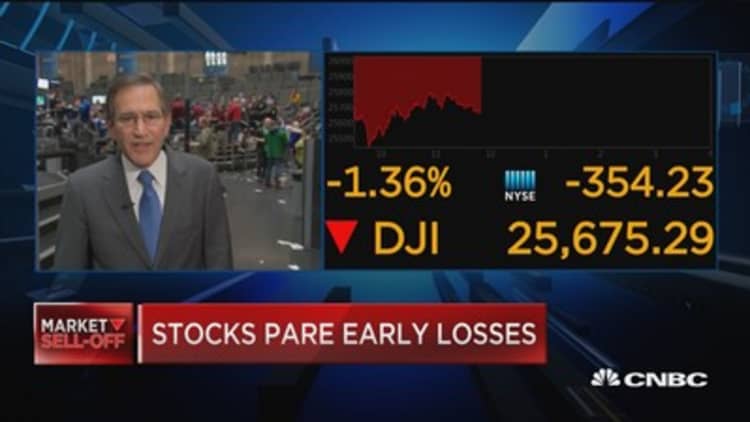The Federal Reserve's "midcycle adjustment" to interest rates could be morphing into something considerably more serious, judging by recent market action.
After the rate cut approved last week, Fed Chairman Jerome Powell quickly doused market expectations that the move was a sign of an extended period of monetary easing. Powell mostly expressed optimism in the economy, saying that the quarter percentage point reduction likely was not "the beginning of a lengthy cutting cycle."
But things have changed considerably in just a week, and financial markets have responded accordingly as bonds have pointed even more strongly to a recession on the horizon. The 10-year Treasury yield hit a three-year low Wednesday, and the inversion between benchmark note's yield and its 3-month counterpart increased by the most in more than 12 years.

The sharp drop in Treasury yields, spurred by worries of a global slowdown, an intensifying trade war and cuts from central banks in New Zealand, India and China, pushed up anticipation that the Fed would follow suit aggressively, despite Powell's assessment.
"The Fed and the market are both looking at the same set of facts, and the outlook has gotten more pessimistic," said Lou Crandall, chief economist at Wrightson ICAP. "Chair Powell has said in the past when the yield curve is inverted, the business community takes that as a recession signal and that affects their own planning. The fed is cognizant of that."
As a result, Powell's characterization of the reduction is a "midcycle adjustment" looks considerably less likely.
Markets anticipate a 100% chance of another quarter-point cut in September, with about a 1 in 3 probability of a half-point reduction. They also see about a 60% chance of two more cuts before the end of the year, according to the CME.
"So much of this is psychological," said Joseph LaVorgna, chief Americas economist at Natixis. "That's why I think the Fed really made a mistake by only cutting by 25 basis points. But they compounded it by calling it a midcycle adjustment. That's just not the thing to say."
President Donald Trump agrees — in a three-part tweet Wednesday morning, the president said the Fed needs to enact "bigger and faster" rate cuts. It was Trump's own tweeting last Thursday that the administration now intends to enact tariffs on all Chinese goods entering the U.S. that kicked off the latest leg in volatility.
The Fed finds itself in a complicated place between expectations from the market's assumptions and Trump's demand against an economy central bank officials characterize as continuing to grow with a strong labor market.
The messaging of a "midcycle adjustment" could be problematic if the Fed sees a need to move more aggressively, and it repeats the communication problems it has had for much of the past year.
"You have to figure out a way to put the genie back in the bottle. I don't know if that can happen, but that's what I would do. Have fewer press conferences, give less information," LaVorgna said. "The Fed is ... making themselves accountable for things they can neither control nor predict."
More QE coming?
In addition to a rate cut, there's also some anticipation that the Fed might have to start up another round of asset purchases known as quantitative easing. The central bank just ended a program to reduce its holdings but may have to start growing the balance sheet again to sop up extra government debt issuance at a time when banks are holding on tightly to reserves, said Mark Cabana, rates strategist at Bank of America Merrill Lynch.
The Fed knocked off more than $600 billion from its bond portfolio by allowing a capped level of proceeds to roll off each month. However, markets began to recoil against the Fed exiting its role in the bond market, and the reduction was ended well ahead of what most analysts had anticipated.
A recently passed resolution to raise the debt ceiling "will open the floodgates on near-term US Treasury supply that would likely force the Fed to start expanding its balance sheet by year end," Cabana said in a note to clients this week. "This dynamic could be exacerbated by any worsening of US-China trade tensions and associated reserve manager (Treasurys) selling."
Cabana said the various dynamics will mean "the Fed will need to respond to these funding pressures to maintain control of its target FF rate. However, we don't think it is likely to respond proactively."
In an April speech, Lorie Logan, who runs the open market operations at the New York Fed, said the trading desk will remain "operationally flexible" as the need for reserves fluctuates.


